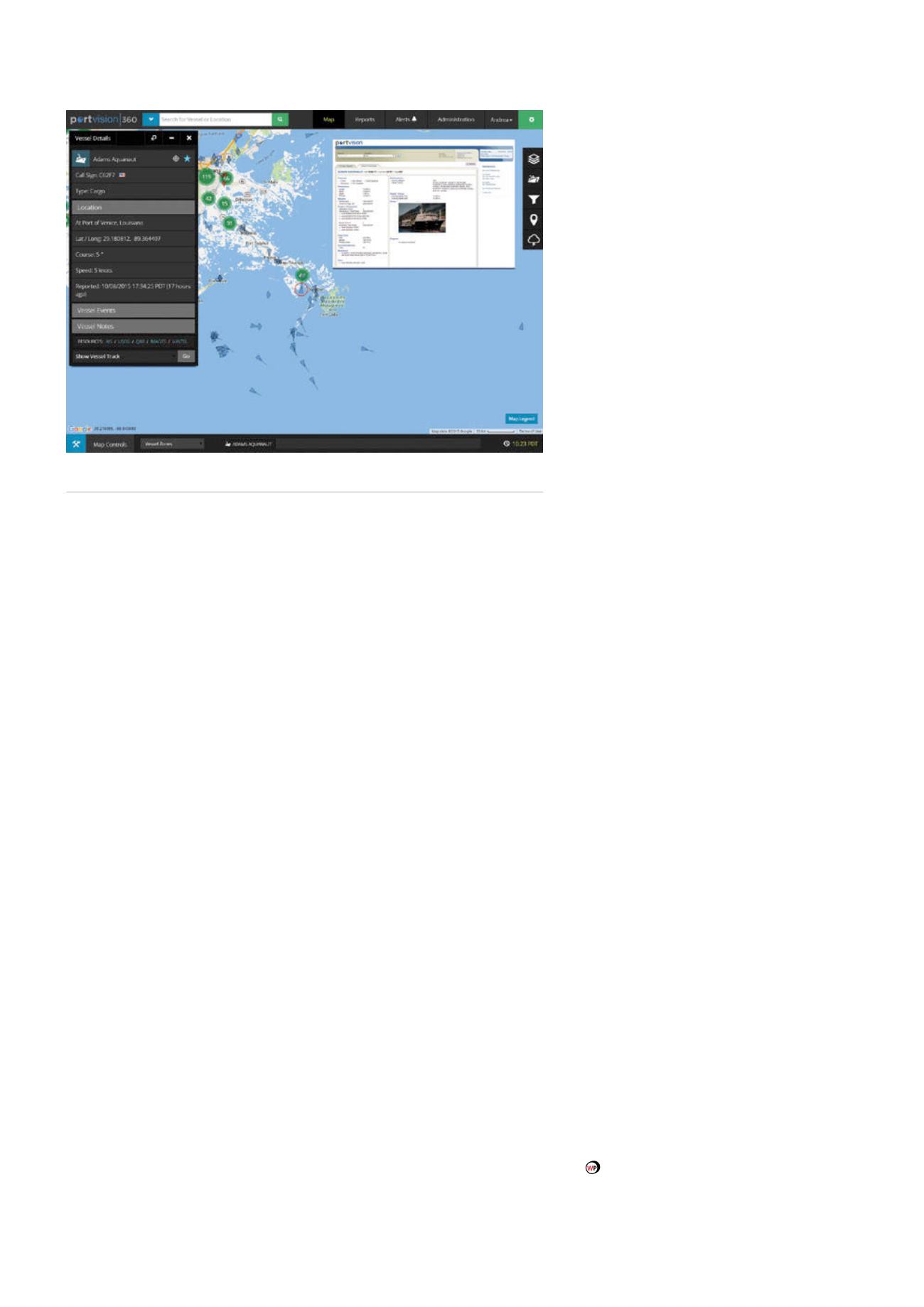
In addition to meeting the Coast Guard’s safety and security
objectives, these changes will also make it easier to realise
the many additional benefits of AIS data for providing instant,
continuous access to critical information about vessel activities
at sea, and in ports and at busy marine terminals. One new key
element is the ability to install AIS on offshore fixed structures
to create an AIS aid to navigation (ATON) system – essentially a
‘virtual ATON’ as opposed to a traditional physical element such
as a lighthouse, buoy or beacon. ATONs enable an authority to
use AIS for transmitting navigation information where no physical
ATON exists. This is possible because AIS provides the ability to
send messages to the unique MMSID assigned to the vessel’s AIS
transponder, bringing it right to the vessel’s wheelhouse.
With the ATON alerting capability, there is an ongoing ATON
transmission approximately every three minutes to all vessels
with the appropriate electronic charting or radar equipment
for receiving and displaying. When a vessel interacts with the
ATON in a designated corridor, it triggers the transmission of an
alert message only to the wheelhouse of the encroaching vessel,
warning its captain and crew the pipeline below.
As described earlier, CAMO was the first to use ATONs in
this way, for pipeline safety alerting. ATONs are also used to
broadcast weather and sea state information, and notify mariners
regarding area whale migration activity. In these and other
applications, AIS safety-related messages can also be broadcasted
to all vessels that are within range of the broadcasting base
station. Previously, these ATON systems were prohibited on
certain fixed structures, such as bridges. The USCG now allows this
practice, reaffirming that the primary benefit of AIS is to provide
near real time dynamic information. Fixed and charted structures
do not move, however some are used by vessels as navigational
aids, based on their position and proximity to shipping lanes. This
Final Rule recognises that reality.
One of the biggest advantages of the new USCG rule
expansion is that any organisation can create an ATON for their
pipeline infrastructure or other fixed asset. They
simply go through an application process with the
USCG. Once approved, the ATON can be used to
trigger automated safety messages to specifically
addressed vessels, giving them an extra layer of
awareness about pipelines and other assets.
Creating new opportunities
In addition to pipeline protection, oil companies
are extending the use of AIS-based tools to
include monitoring and preventing encroachment
and damage to a broader range of infrastructure
including unmanned platforms, subsea cables and
other sensitive infrastructure. Additionally, AIS is
being combined with radar and other data sources
to enable the owners of remotely operated fixed
structures to establish a virtual ‘watch team’ over
multiple remote assets anywhere in the world.
The addition of radar to the system ensures
that even vessels that are not transmitting AIS
signals can be monitored. Although these vessels
cannot be alerted in the same way that vessels are
alerted by ATONs, they can at least be seen and
included in a more complete picture of prevailing traffic patterns.
It is also common for fixed infrastructures, such as oil rigs to be
equipped with radar – this data can be ingested into AIS-based
vessel tracking tools that can, in turn, filter for relevant data about
any encroachment that represents a threat to the asset and trigger
the necessary alert.
Adding vessel intelligence
Each of the aforementioned monitoring and alerting scenarios
can be enhanced with the availability of more information. As
part of the USCG’s expanded NOA regulatory requirements, five
new data fields were added to provide more information about
vessel size and voyage details. Even with these additions, however,
information available with AIS data, alone, is limited to a set of
unique vessel identifiers with minimal, and usually inaccurate,
vessel dimensions.
To provide access to additional information that makes
pipeline and asset monitoring and alerting programmes more
effective, the latest AIS vessel tracking services provide greater
intelligence about encroaching vessels. One example is text, email,
phone and other contact information to improve alerting. Today’s
services also provide other vessel information for a variety of
valuable purposes. This can include information to identify vessels
with specific features, locate nearby vessels for operational or
incident-response purposes, or build custom fleets based on these
unique attributes so they can quickly identify not only the best
vessel for the job, but what vessel can be there first.
Pipeline safety is increasingly critical for oil companies who
have hundreds of vessels crossing their pipeline infrastructure
each day. Protection programmes can now be augmented with
AIS-based vessel tracking tools that provide real time visibility in
all areas where encroachment could lead to a pipeline strike, an
automated alerting system to pre-empt imminent strikes, and a
collaborative platform for assessing risk and moving forward with
the best solution.
Figure 3.
Oceaneering’s PortVision 360 provides access to additional information
with vessel intelligence, making pipeline monitoring more effective.
60
World Pipelines
/
FEBRUARY 2016


